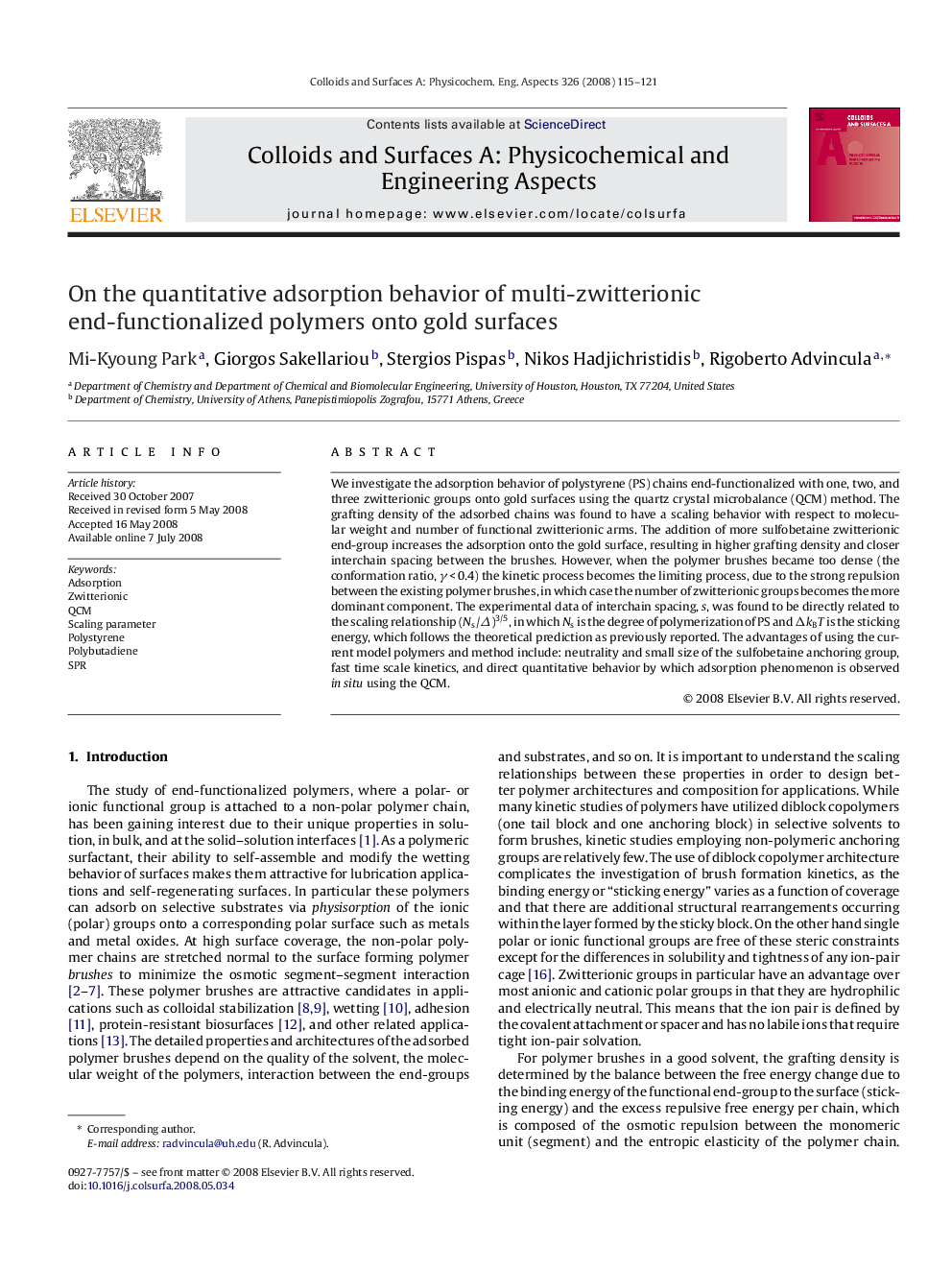| Article ID | Journal | Published Year | Pages | File Type |
|---|---|---|---|---|
| 596450 | Colloids and Surfaces A: Physicochemical and Engineering Aspects | 2008 | 7 Pages |
We investigate the adsorption behavior of polystyrene (PS) chains end-functionalized with one, two, and three zwitterionic groups onto gold surfaces using the quartz crystal microbalance (QCM) method. The grafting density of the adsorbed chains was found to have a scaling behavior with respect to molecular weight and number of functional zwitterionic arms. The addition of more sulfobetaine zwitterionic end-group increases the adsorption onto the gold surface, resulting in higher grafting density and closer interchain spacing between the brushes. However, when the polymer brushes became too dense (the conformation ratio, γ < 0.4) the kinetic process becomes the limiting process, due to the strong repulsion between the existing polymer brushes, in which case the number of zwitterionic groups becomes the more dominant component. The experimental data of interchain spacing, s, was found to be directly related to the scaling relationship (Ns/Δ)3/5, in which Ns is the degree of polymerization of PS and ΔkBT is the sticking energy, which follows the theoretical prediction as previously reported. The advantages of using the current model polymers and method include: neutrality and small size of the sulfobetaine anchoring group, fast time scale kinetics, and direct quantitative behavior by which adsorption phenomenon is observed in situ using the QCM.
